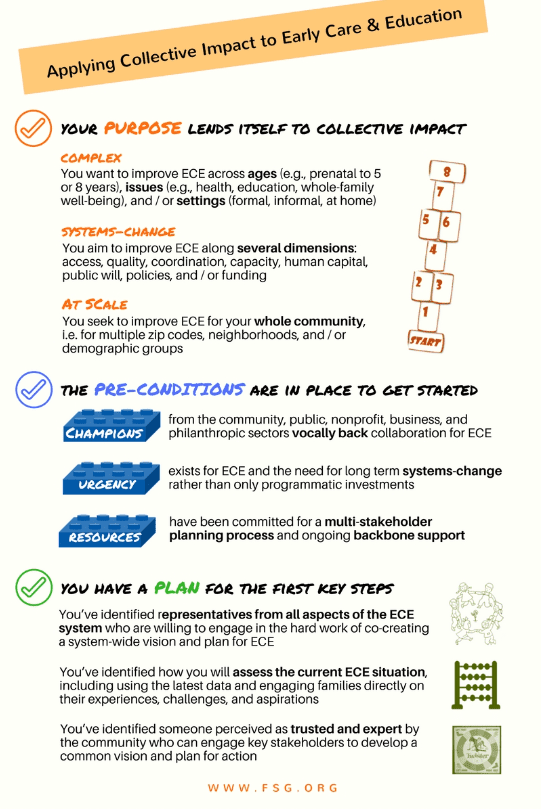“Where do we even start?”
“How can we expand access when we don’t have good quality?”
“How do we build a skilled workforce when we can’t pay them what they deserve?”
“How do we reach the informal providers who are caring for half of our community’s children?”
These are just some of the gnarly questions that I heard over the course of the summer after talking with funders across the country about our resource, Improving the Odds: Seven Principles for Investing in Early Care and Education. Indeed, the world of early care and education (ECE) faces substantial and complex challenges. At the same time, these conversations also yielded several positive developments that are paving the way for hope.
First, the silos that start in Washington, D.C. and extend down to local cities and towns are becoming more porous. Federal programs, funding, and policies for our nation’s youngest sit in many different departments—the Departments of Education (e.g., Preschool Development Grants), Health and Human Services (e.g., Head Start; Child Care and Development Block Grant; Maternal, Infant and Early Childhood Home Visiting Program), and Agriculture (e.g., the Child and Adult Care Food Program)—to name just a few. This means that at the local level, funding streams often also co-exist in isolation, as do the departments and employees that administer them. Luckily, we are seeing more and more collaboration at the federal level through the Early Childhood Development Interagency Coordination, as well as the development of children’s cabinets that blend and braid funding at the local level.
Second, communities are finding ways to connect the dots. Fragmentation is the name of the game in ECE—but that’s not a bad thing as mixed delivery systems are good for the community. Early care and education is provided by dozens of programs and services of all shapes and sizes, not to mention by every single family member in a community. Trying to get all of these important actors mapped, let alone around the same table, can seem like an impossible feat. However, I was encouraged to learn that in Nashville and New Hampshire there have been successes in getting ECE providers to share services, which allows more resources to be allocated to quality, and opens the door for more unity in the sector.
Third, there are promising developments on the topic of the ECE workforce. The National Academy led a process this year with 5 teams (DC Region, California, Illinois, Virginia, and Washington State) to develop action steps inspired by the groundbreaking “Transforming the Workforce for Children Birth Through Age 8: A Unifying Foundation” report. This coming year, Colorado, Minnesota, and Nebraska will participate in the same process. At the same time, NAEYC’s new Power to the Profession initiative just launched with the aim of defining the early childhood profession by establishing a unifying framework for career pathways, knowledge and competencies, qualifications, standards and compensation. These initiatives are a much-needed boon and boost for the millions of people caring for and educating our youngest.
These positive developments all have one thing in common: they are requiring cross-sector people, agencies, and resources to come together in new ways. It is no surprise that this summer’s exciting report, “The Road to High-Quality Early Learning: Lessons From the States” included among its success factors:
- Housing all children’s services under one umbrella or creating a children’s cabinet department that works across agencies
- Improving coordination across programs and systems by sharing data and aligning curriculums and assessments
- Funding early education programs with dedicated state dollars combined, or braided with funding from Head Start and other federal programs to make the most efficient use of available resources
- Bringing together advocates, politicians, philanthropists, practitioners, and business leaders to work closely with policymakers at promoting high-quality, accessible early education
We have seen these same success factors at play in our own work in ECE and would augment the last success factor to also include community members and families.
Given that all these success factors require sustained, cross-sector, multi-stakeholder alignment processes, it is no surprise that many of the people I spoke with are considering collective impact as one possible approach to tackling ECE challenges in their communities. In response, we’ve developed an infographic to help determine if collective impact makes sense for a community’s ECE aspirations.

